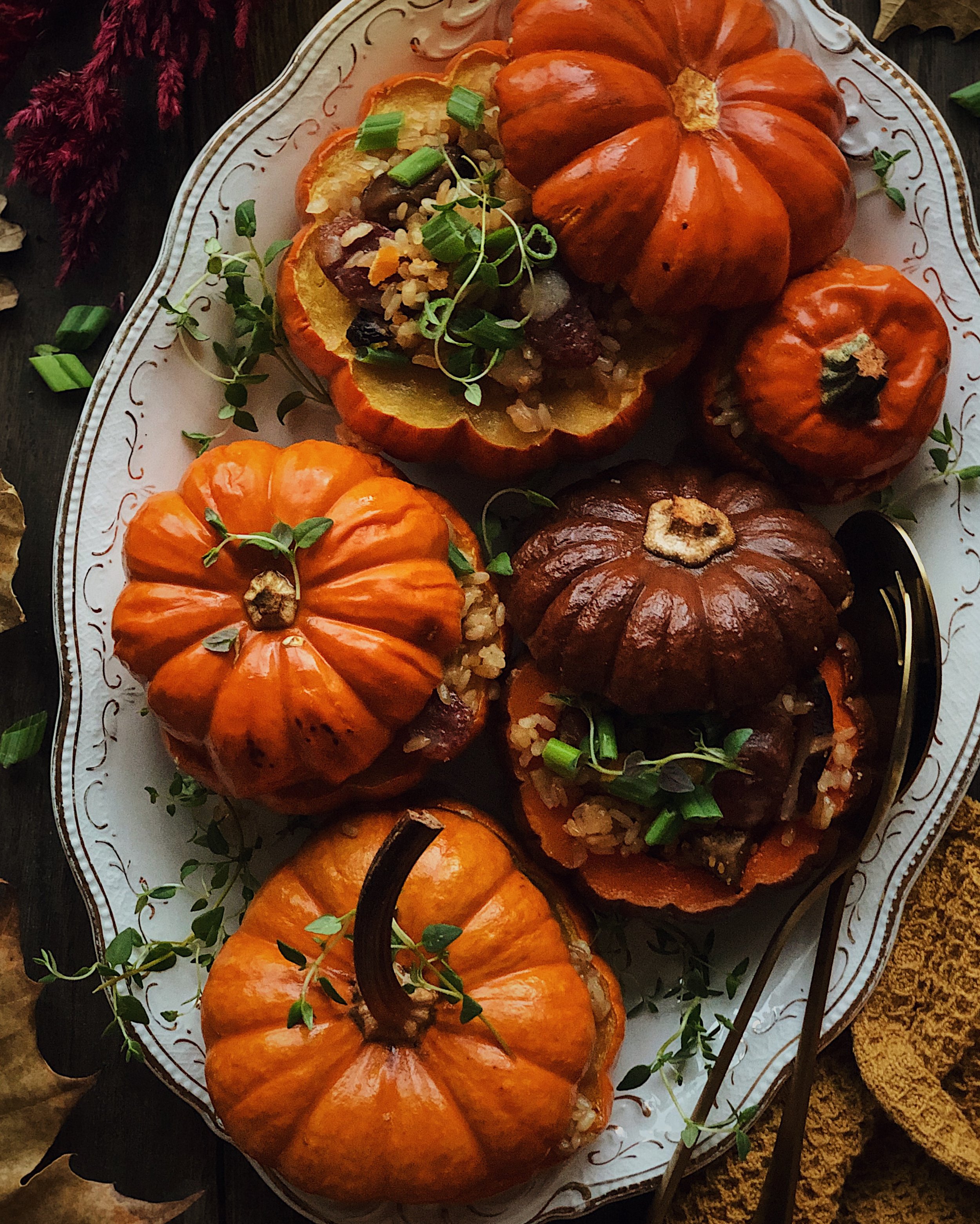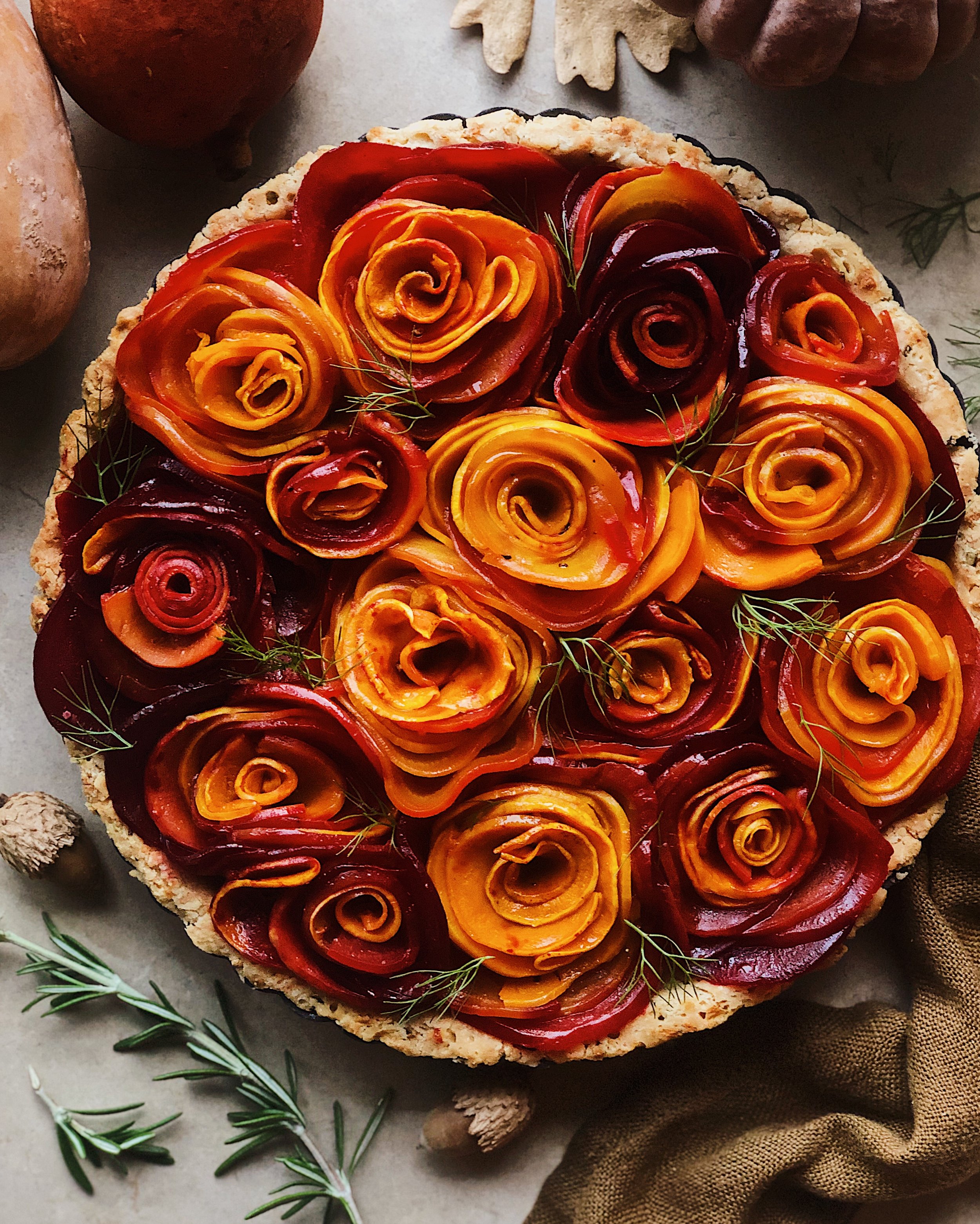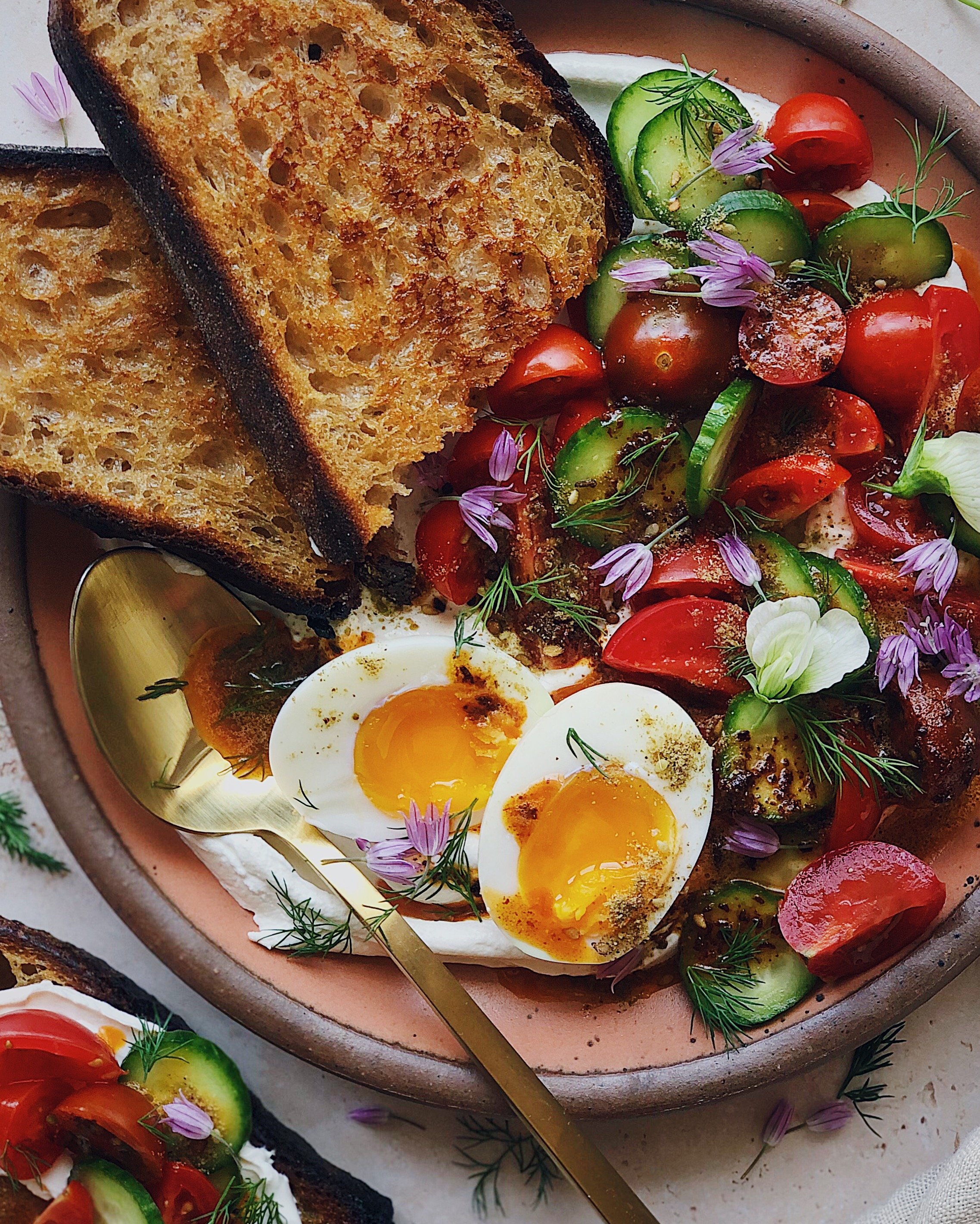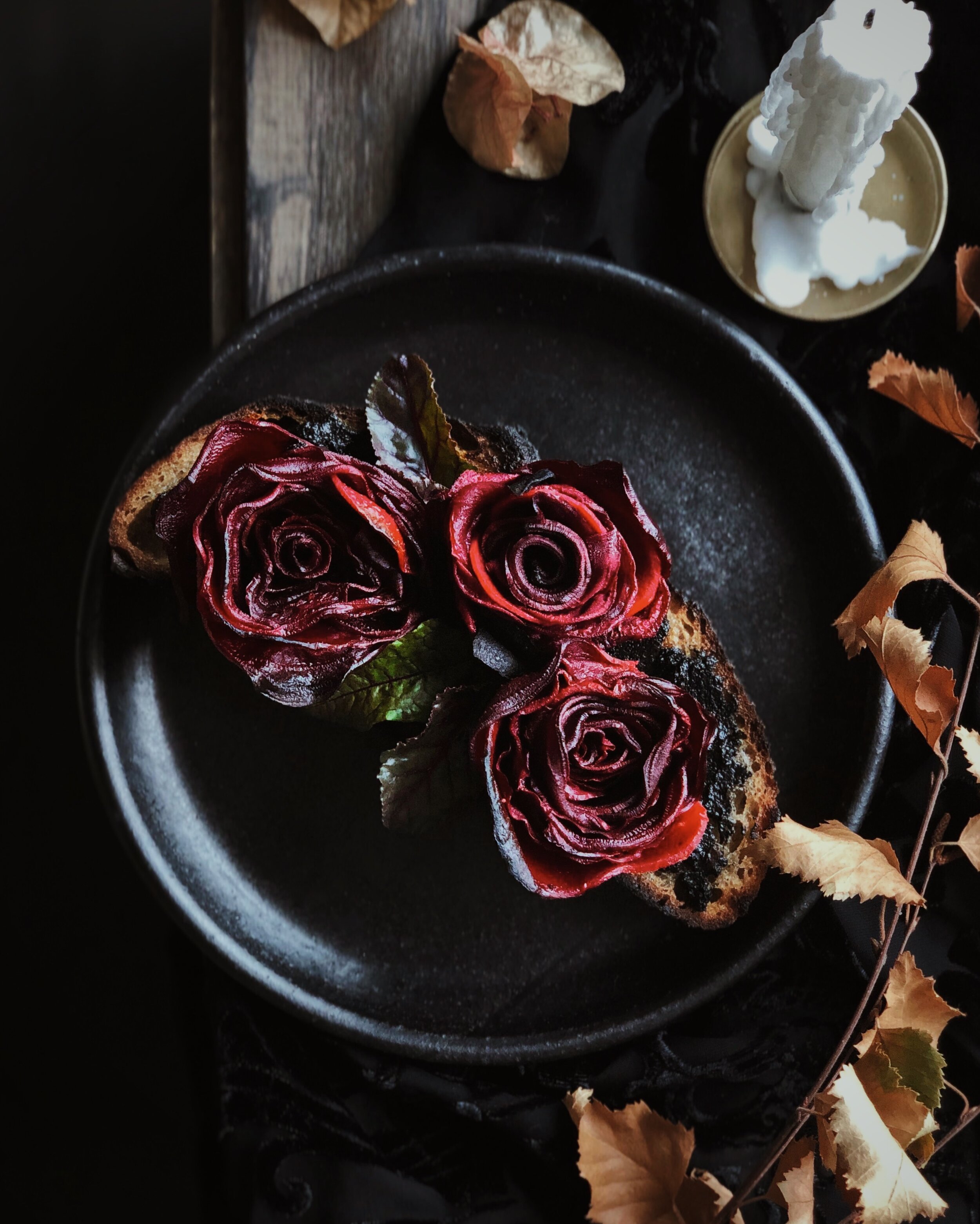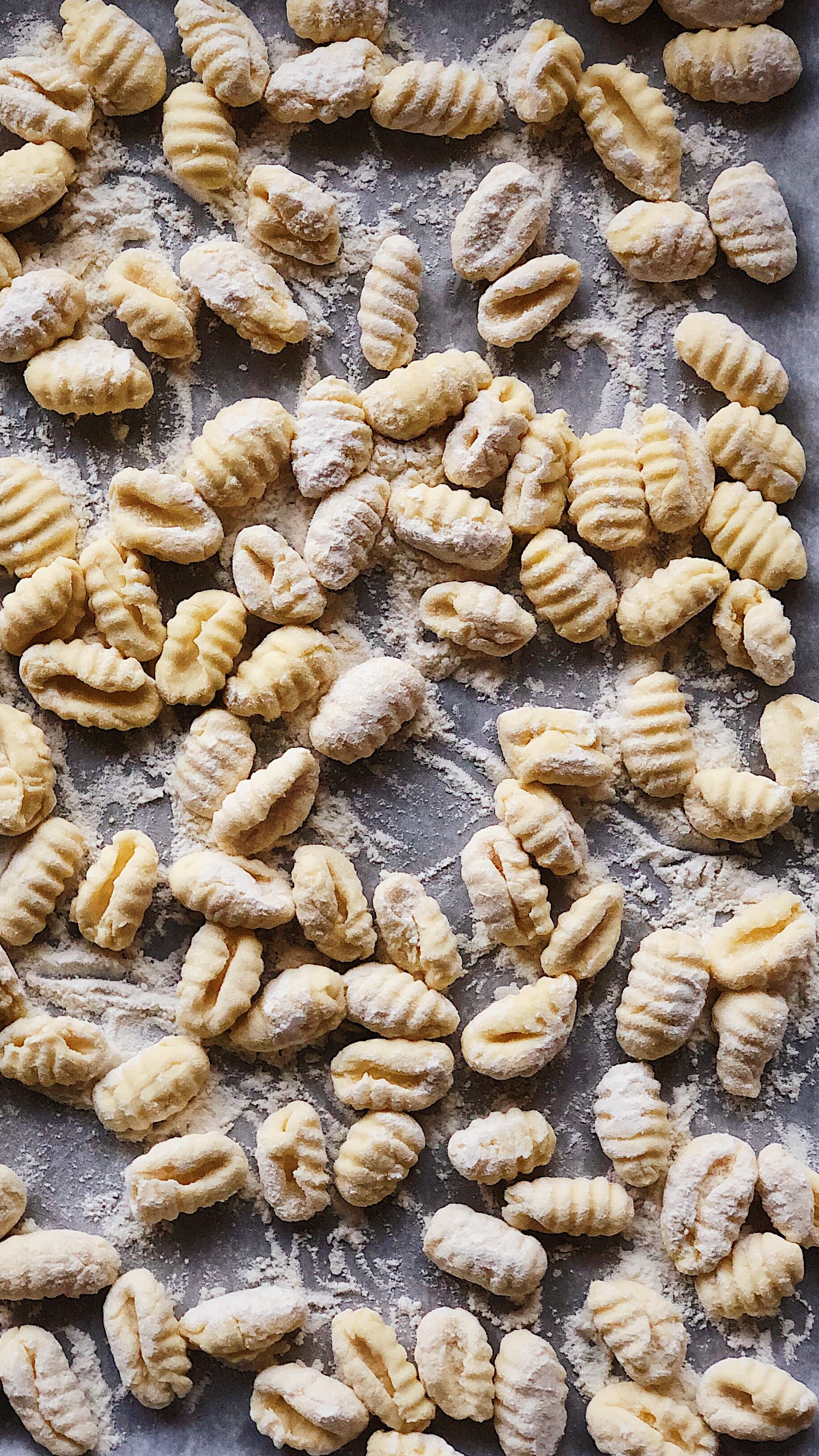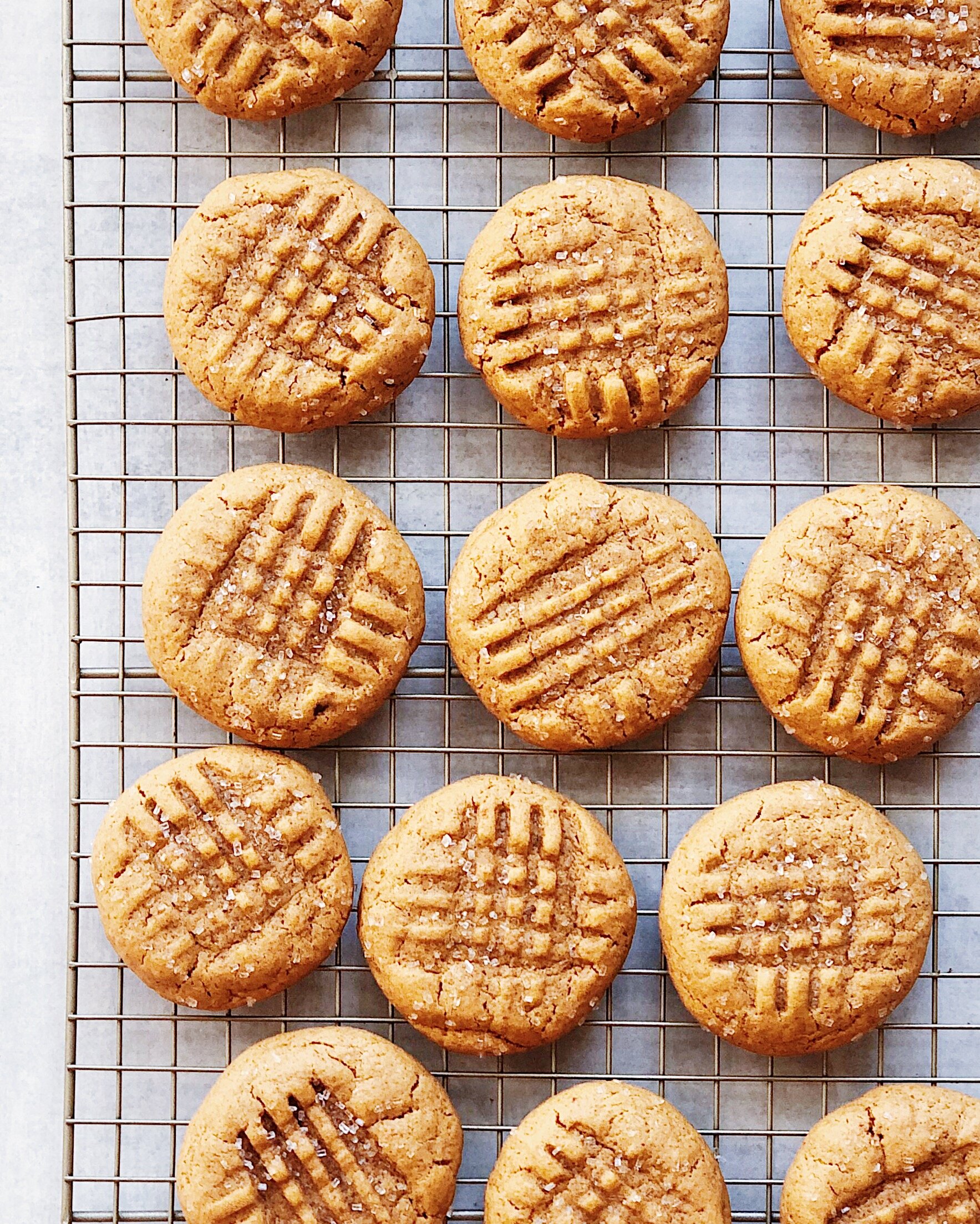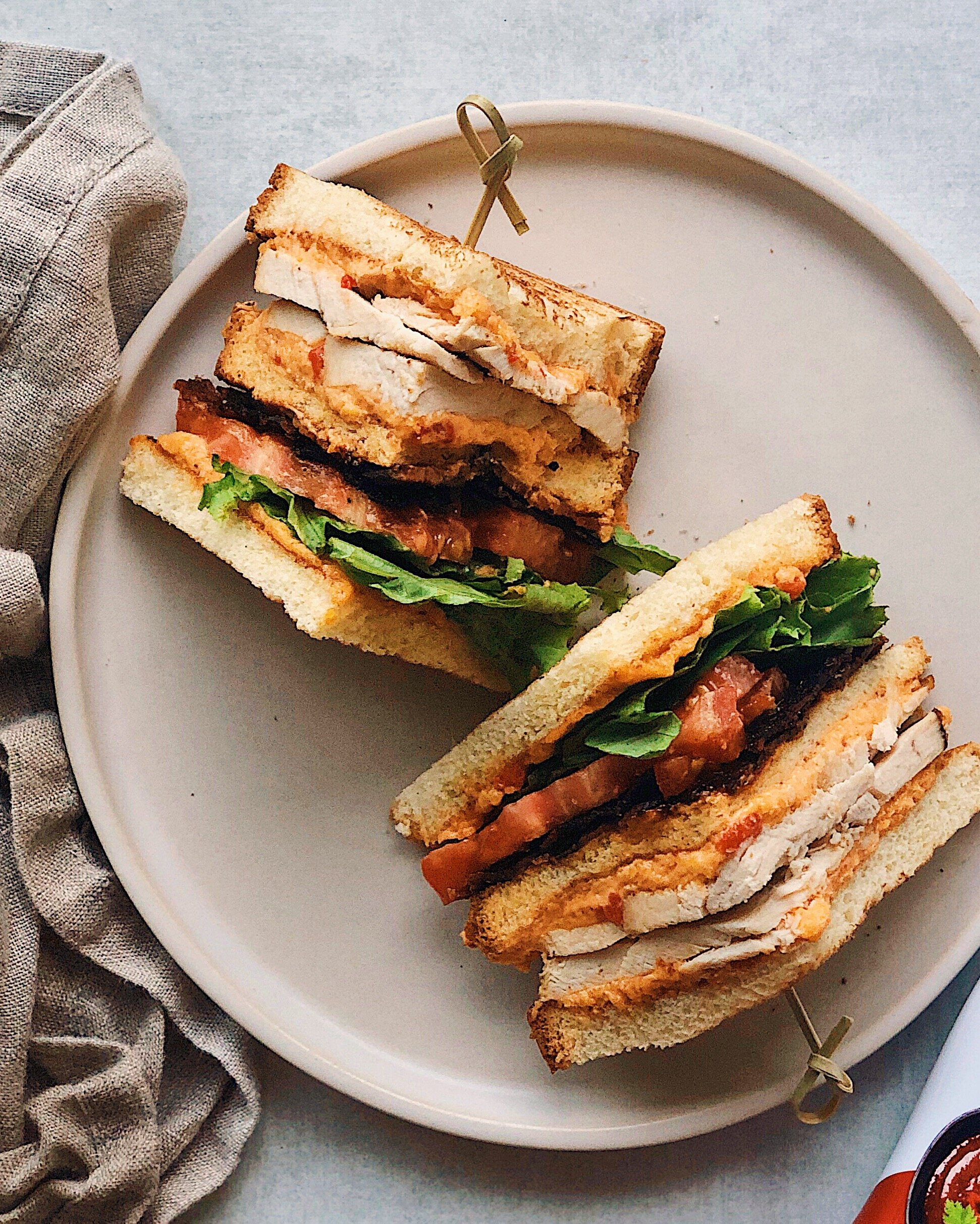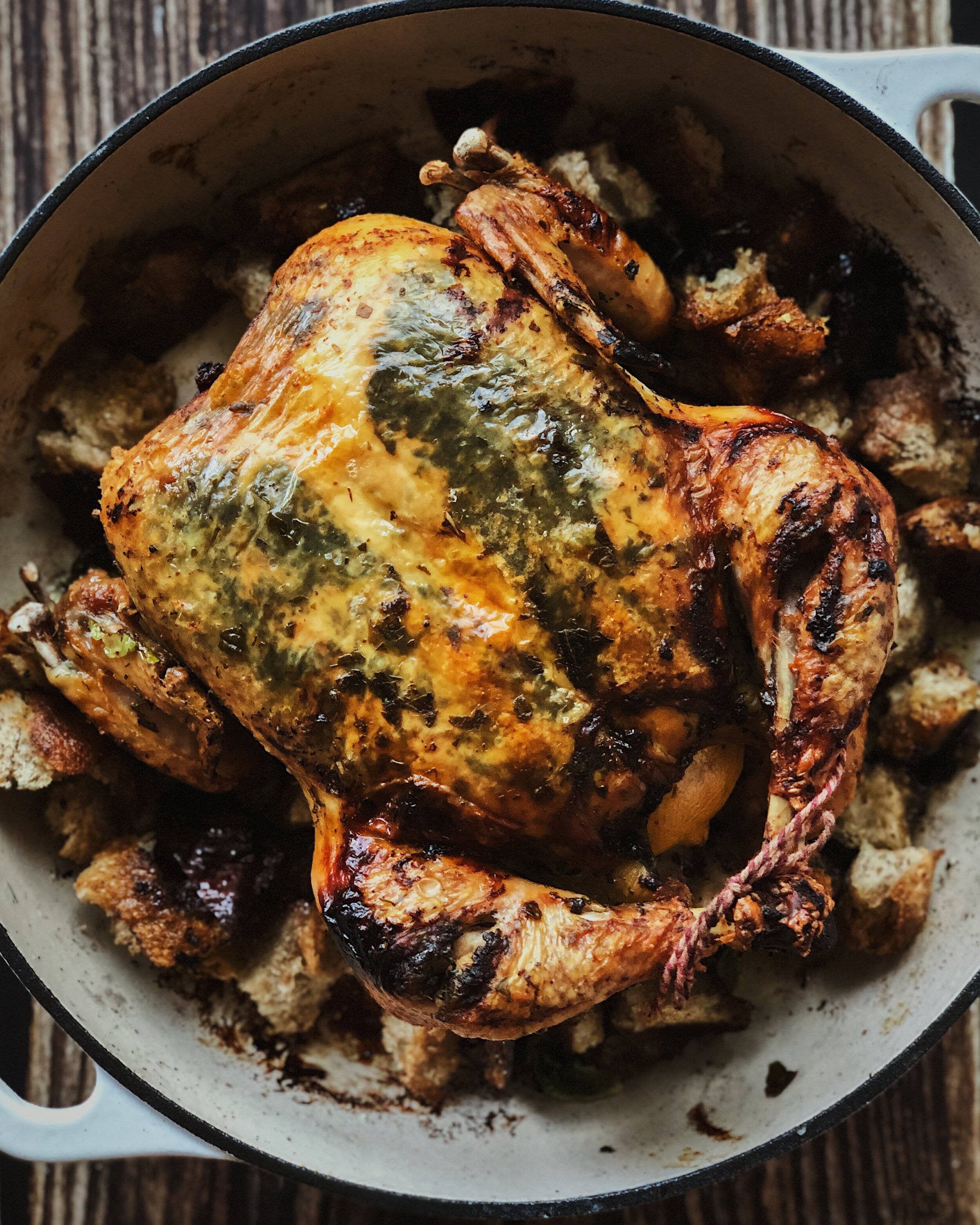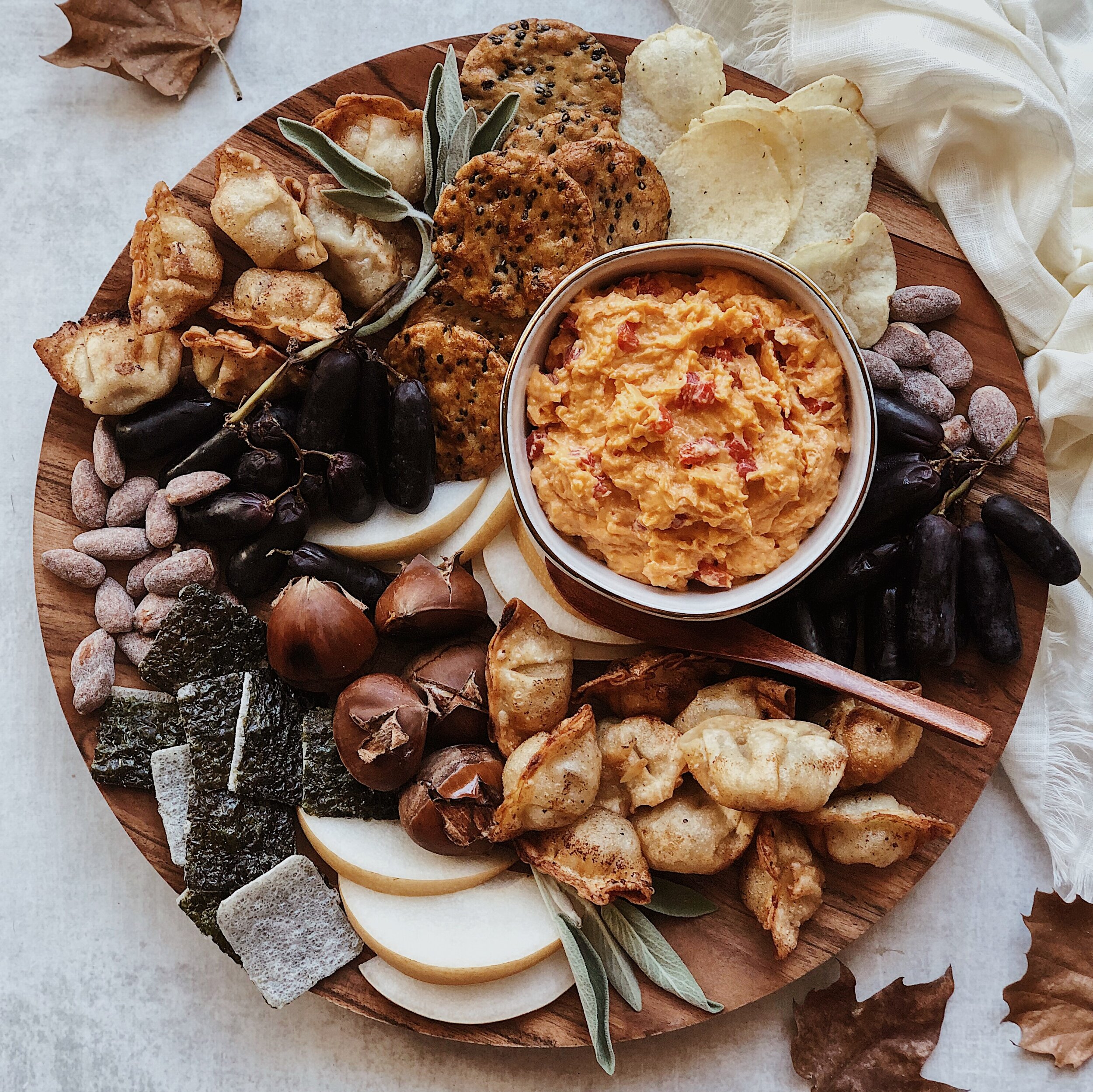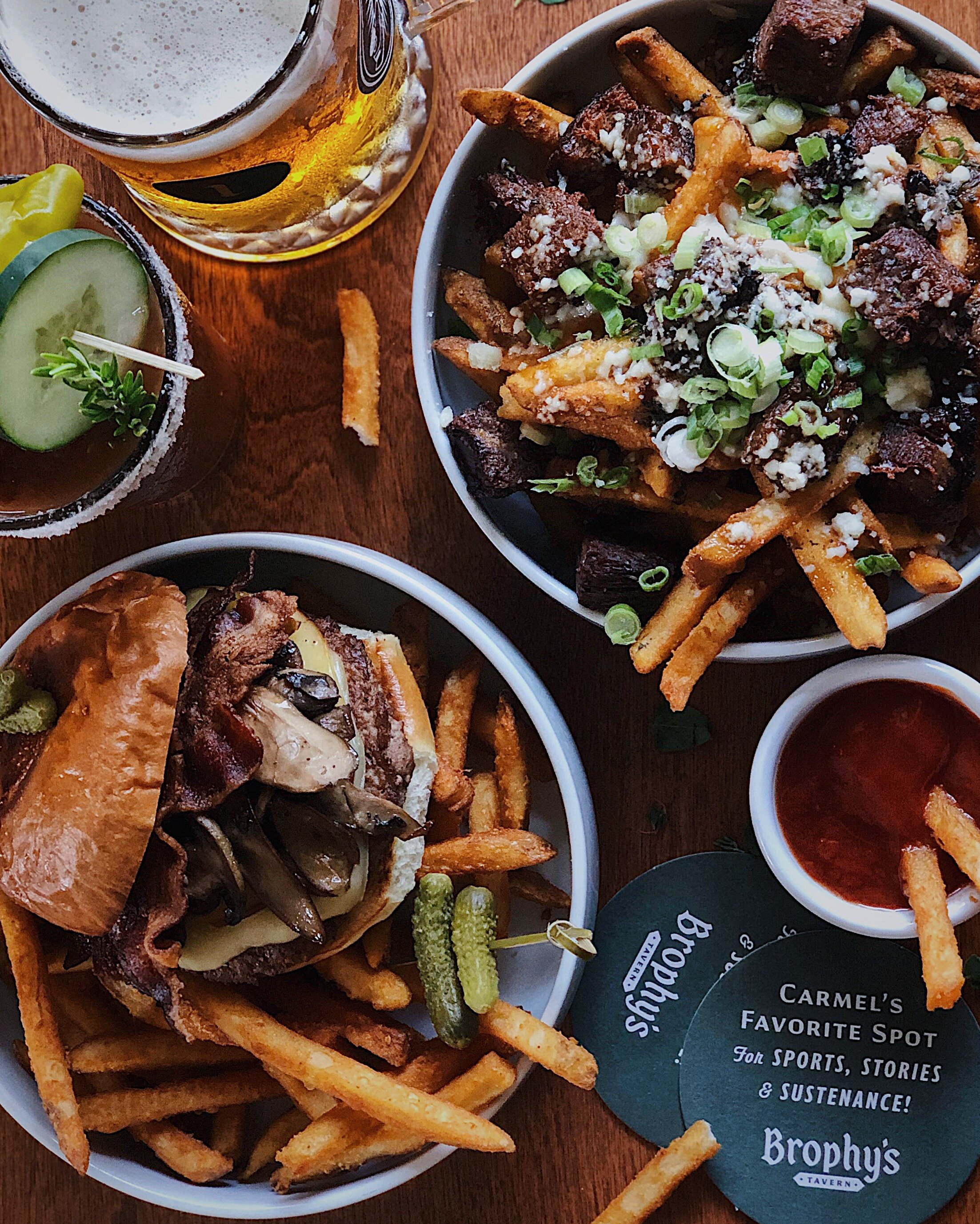My Best 9 of 2020
/I rounded up my best 9 photos from 2020 on Instagram—not based on the greatest number of likes received, but the photos that I was the most proud of this past year. Here’s a little more detail about the dishes in the photos I chose.
Gochujang Fried Chicken Bao
You can get ready-made lotus leaf bao at Asian supermarkets. I always have some handy in my freezer, and when I want to use them, I place them on pieces of parchment paper and steam them in my bamboo steamer.
To make the spicy fried chicken, I cut chicken thighs into small pieces and then coated them in a mixture of beaten egg and soy sauce, and then rolled them in corn starch. After deep frying, I tossed the crispy chicken pieces in this bottled sauce*, tucked them into the steamed bao, and garnished with sesame seeds and sliced scallions.
*This was a client’s product but this recipe was not sponsored.
Avocado and Burrata Toast
I made these celebratory toasts to mark the 2-year anniversary of my Instagram account. I used four-grain sourdough from an awesome little local bakery called Fox and Lion Bread. I topped them with:
sliced avocado
gobs of burrata
pickled carrot ribbons (recipe here)
curly scallions (slice scallions lengthwise and soak in iced water)
pea shoots
everything seasoning
edible flowers from my backyard garden
Viet-Cajun-Inspired Vermicelli Bowl
Frozen shrimp became a stable in my freezer during lockdown, and I always keep rice vermicelli in my pantry. You can tell that I made this when I was really trying to limit my grocery trips and had run out of fresh garlic, because my nước chấm dressing features a last-resort use of bottled fried garlic that really was not the same. To assemble the rest of the bowl:
Soak rice vermicelli in boiling water for 5 minutes. Rinse in cold water and drain.
Pat shrimp dry and toss in cajun spices and a bit of brown sugar. Sear in a cast iron skillet on both sides to get that namesake blackened shrimp look.
Prep your choice of herbs and greens. All of mine were grown in my garden! I used: mint, red shiso, sorrel, chard, mixed microgreens, and scallions.
Add other produce odds and ends that you have on hand! I used cucumbers and pickled carrot ribbons (recipe here) because I had them.
Vegan Jackfruit Tacos & Homemade Pink Tortillas
To make corn tortillas from scratch, I simply follow the ratios from the tortilla recipe on the bag of Maseca brand masa harina**. For 8 pink tortillas, I combined 1 cup of white masa harina, 2/3 cup hot water, a pinch of salt, and a little bit of beetroot powder; kneaded it together; and rested under a damp towel for 20 minutes before I divided them evenly into 8 balls. I cut open a gallon-sized ziplock bag to use to prevent the dough from sticking to my tortilla press. This is the cast iron tortilla press I use**; I usually press and then rotate the dough a couple of times to get a nicely rounded, thin tortilla. Then I cook them on a super hot griddle pan.
Canned green jackfruit in brine or water is a common item in Asian supermarkets, but lately it has become so popular as a vegan shredded meat substitute that they even have it at Trader Joe’s. I don’t think it tastes like meat, but it does have a nice texture for tacos and holds on to seasonings well. I squeezed out the liquid, simmered with a mole-inspired sauce, and shredded it up.
Make Your Own Fresh Spring Rolls Night
This was one of my ideas for turning dinner into an interactive experience during lockdown. You can get rice paper sheets in various sizes at Asian supermarkets; I like to get the smaller ones so each roll is just a couple of bites. Serve at the table with a big platter of boiled shrimp, fresh veggies and herbs, and rice vermicelli…or whatever you have lying around that is fresh and easy to roll up! Take turns soaking the rice paper briefly to soften it, roll up your fillings, dip, and eat! I found that my leftovers of homemade Korean ssamjang made for an awesome dipping sauce for fresh rolls, even though that’s obviously not a traditional accompaniment to these Vietnamese-inspired rolls. Get the recipe for my ssamjang here.
Easy Semi-Homemade Donuts
My mom taught me how to make these semi-homemade donuts out of canned biscuit dough when I was a kid; I have no idea where she got this brilliant idea because she did not grow up with access to this type of canned product. But all you do is cut or poke a hole in the middle of each raw biscuit, then deep fry. Just keep the oil temperature a little lower than you would for other deep-fried foods because the dough can burn fast! I love that this dough is more on the savory side than normal donut dough, so it balances well with the glaze.
To make the glaze, I used this recipe by my friend Kristina. Then I slowly took my time decorating with chopped pistachios and edible flowers collected from my backyard garden.
Roasted Root Vegetable Roses on Toast
For Halloween, I made this toast and styled the photo inspired by Miss Havisham from Great Expectations (or maybe the “Helena” music video by My Chemical Romance?). The spread is a mix of miso and black sesame tahini and the roses are thinly sliced roasted beets and sweet potatoes. The original idea and recipe for the roses is by Amiee Twigger, and can be found here—I love how realistic and pretty they turned out! The chard leaves came from my garden.
Malaysian Snack Platter
I was given the opportunity to participate in a sponsored campaign where home chefs shared dishes that celebrated their heritage. Getting to partner with a company that encourages bloggers to stay authentic and share stories from diverse cultures is such a big deal, and felt especially significant this past year. I made this platter where I reimagined Malaysian classics in mini, bite-sized form, inspired by nasi lemak and other memories from my visits to the country where my parents were born. I included:
acar, or Malaysian-style turmeric pickled vegetables
mini chicken satay on cocktail picks; recipe for my satay marinade here
peanut sauce; instructions for how to make it using leftover satay marinade here
coconut rice balls; you can find my coconut rice recipe here, but omit the butterfly pea tea and mold into bite-sized balls
sliced onion, green beans, and cucumber
shrimp chips, red skinned peanuts, and salted egg fish skin
fried anchovies and sambal ikan bilis
dragonfruit and rambutan
boiled 6.5-minute egg
Pumpkin-Shaped Pretzel Buns
In 2020, I overcame my intimidation from yeast-based dough recipes and got really into make pretzels of different shapes and sizes. You can find my recipe for these pumpkin-shaped pretzel buns here.
Thank you so much for supporting my content this past year!
What type of content to you want to see more of in 2021?









